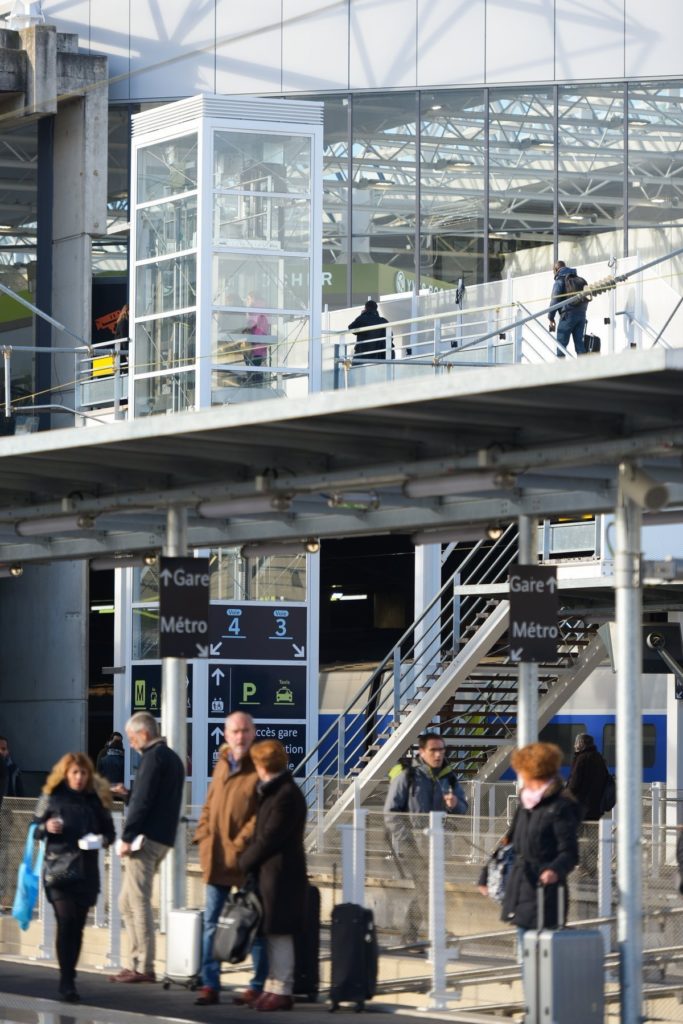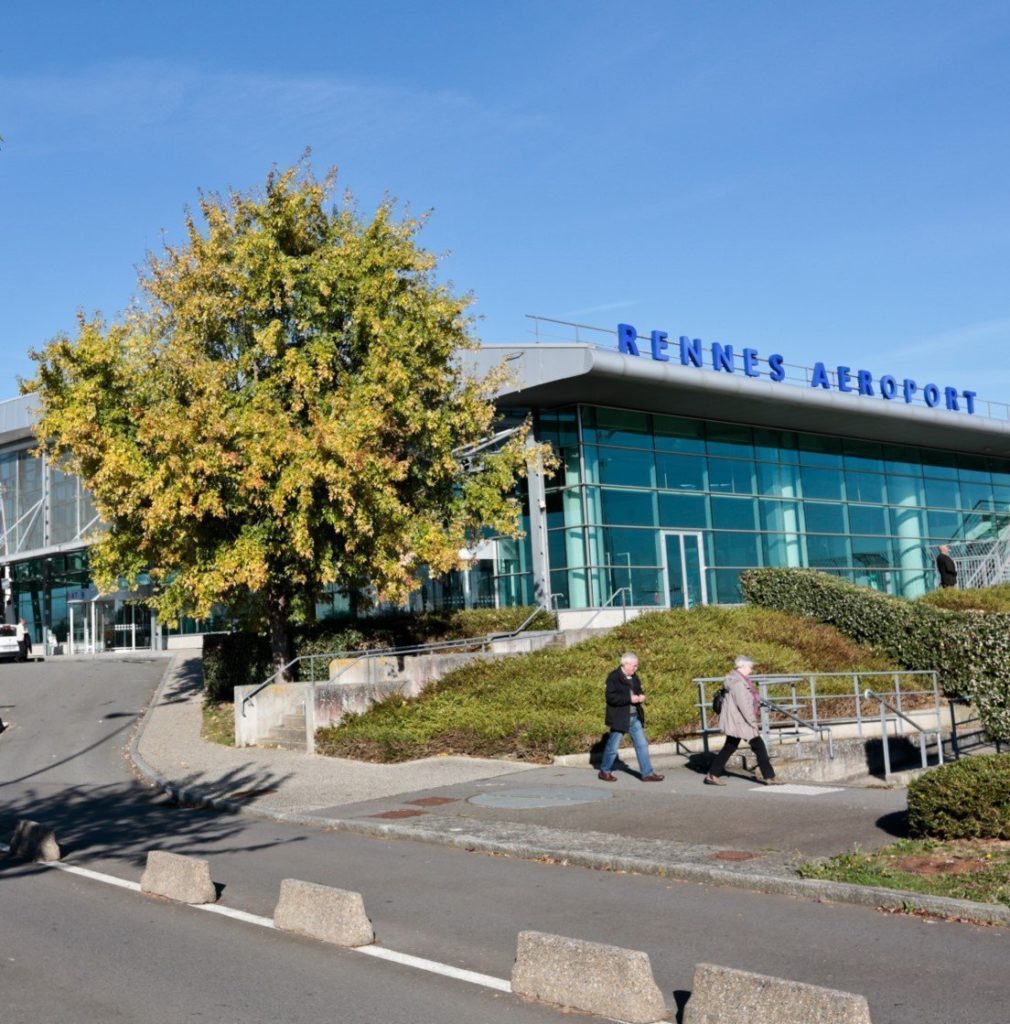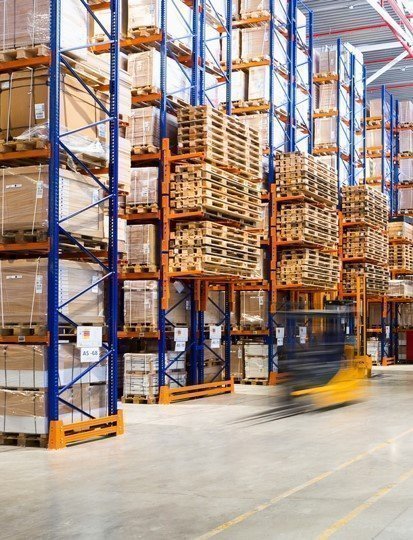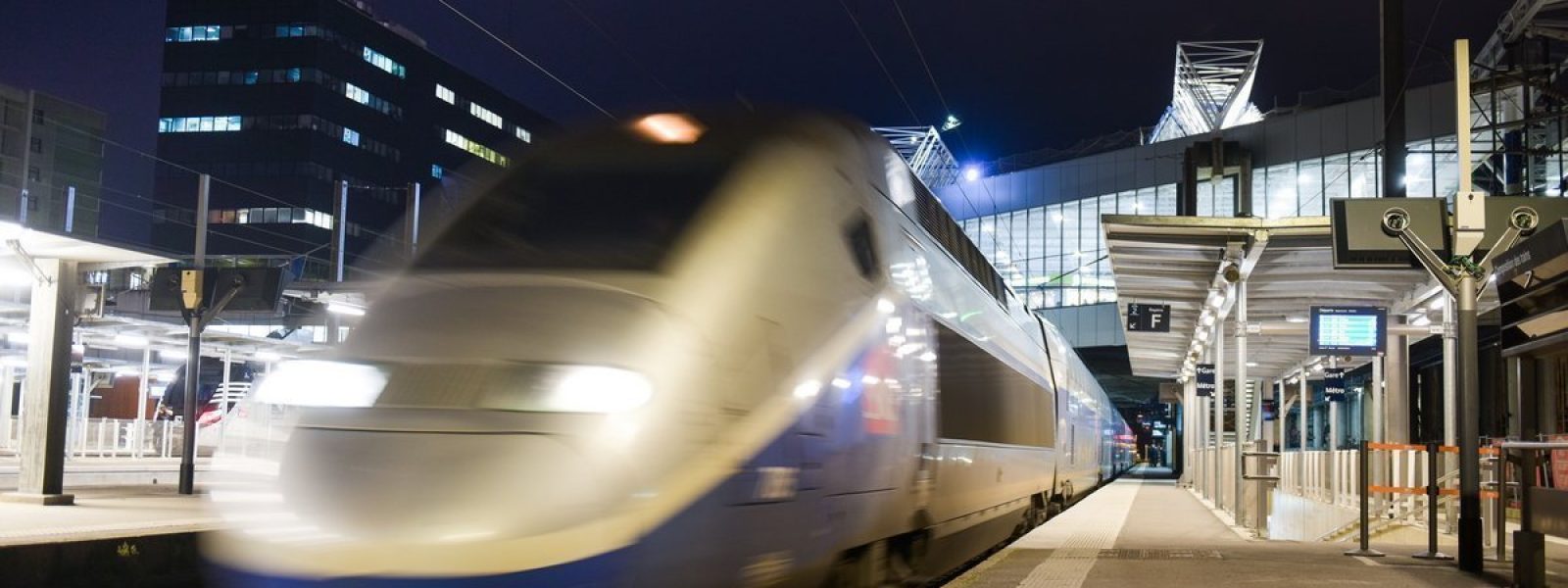The high-speed railway line was inaugurated in 2017
Journey time between Rennes and Paris is now just 1 hour and 25 minutes. 27 high-speed trains run between Rennes and Paris during the week, including 14 direct high-speed trains with a journey time of under an hour and a half. This is a major opportunity for efficiency for heads of companies and for business trips more broadly. Rennes presents arguments to attract the business community, promotes the establishment of new companies and attracts Parisian executives looking for mobility. But there’s more to it than the high-speed railway line… a new multi-modal station will open in 2019 alongside the emergence of the new EuroRennes business quarter, which will have its own 130,000 m2 of offices, 115,000 m2 of accommodation and 30,000 m2 of business, services and leisure activities. There will also be a second metro line, making Rennes an even more accessible city.

More than 700,000 passengers passed through Rennes airport in 2017

In terms of accessibility, Rennes can also rely on its airport, which achieved a record number of visitors in 2017 with 80,000 additional passengers welcomed. This hub has grown by more than 10% since 2010, which is three times faster than the average French airport.
Rennes airport serves 14 European destinations with direct flights (40% of its activity) and 13 direct national lines. The Rennes-Paris CDG line is the airport’s top route with 131,000 passengers. It counts a total of 10 airline companies and 27 direct destinations. It is also worth noting that more than 10,000 tonnes of goods are transported through the hub. Freight activity and express freight in particular account for the majority of the traffic through the hub. Rennes airport will increase its offer in 2018 as Easyjet recently announced its arrival with the opening of the route to Lyon and should soon announce a new route.
Logistics, an important lever for company competitivity

Rennes and, more specifically, Brittany have a real challenge to rise to in terms of improving freight transport and optimising logistics. This is certainly more complicated than elsewhere because of its geographical location, which means that Brittany must innovate and intensify its logistics policy. Breton economic actors have rallied to co-design a regional logistical plan of action that aims to support the development of new multi-model transport offers, to actively assist in the transformation of companies’ logistics chain and to structure logistics in Brittany. The Bretagne Supply Chain cluster, established in Rennes, aims to help companies, especially SMEs, improve the level of their logistics performance. It also participates in drawing up and managing experimental collaborative projects in the field of urban logistics and logistics cooperatives.


